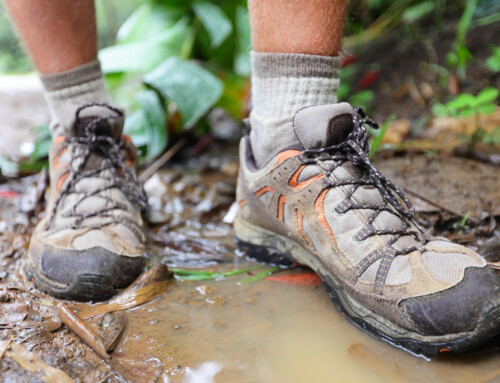by Gabe Battaglia, SPT
Tips and Tricks for Working from Home
The COVID-19 pandemic forced many people to work from home in environments with poor ergonomic setups. (The first step is checking out these ergonomics tips for working from home and fixing your workspace.) Poor desk ergonomics can cause postural strains leading to muscle imbalances, weakness, headaches, jaw pain, back pain, and spinal dysfunction. All of these are impairments that can be addressed with physical therapy. However, physical therapy can only go so far if you continue sitting at an improper workstation.
Try These 11 Helpful Ergonomics Tips For Working From Home
How to set up your desk:
1. Screen: This should be at eye level or slightly lower to prevent bending your neck.
2. Keyboard: Will be placed flat on your desk and at elbow level to allow for proper wrist positioning.
3. Chair: The backrest should support the natural curve of the back. The proper support will mitigate slouching. Adjust chair height so that your thighs are parallel to the ground and feet are placed firmly on the ground.
4. Desk: Should be positioned about elbow height to allow for proper shoulder, elbow, and wrist positioning.
How to sit at your desk:
5. Head and neck: In a neutral position directly over the shoulders. The screen should be at eye level, eliminating the need to bend your neck.
6. Shoulders: Relaxed and neutral, not raised or hunched forward.
7. Arms: Your elbows should be bent to 90 degrees and support forearms on the armrest.
8. Back: Sit upright or slightly inclined forward, the backrest should maintain the natural curve of the back.
9. Wrists: Should be in a relaxed, neutral position in front of the body making sure not to bend sideways in either direction.
10. Knees: Will also be in a relaxed, neutral position. They should be equal to or slightly lower than the level of the hips.
11. Feet: Should be placed firmly on the ground. A footrest may also be used to support the feet.
Stretches To Improve Results of Poor Desk Ergonomics
Take breaks to move around at least once every hour. Moving the body regularly can help prevent or reduce pain and stiffness. Below are some stretches you can do throughout your day to improve muscle imbalances caused by poor desk ergonomics:
Hip Flexor Stretch:
- Begin in a half kneeling position with the leg you want to stretch in back
- Tighten your abdominal muscles, tilt your pelvis back (tuck your tail), and push your hips forward until you feel a comfortable stretch in the front of your hip
- Keep your back straight and hips facing forward
- Hold for 30 seconds
Pec Stretch:
- Begin standing upright in a doorway or corner with your shoulders and elbows bent to 90 degrees
- Take a small step forward until you feel a comfortable stretch in your chest
- Do not shrug your shoulders
- Hold for 30 seconds
Chin Tuck:
- Begin in an upright position with good posture
- Keep your gazed fixed on something in front of you and draw your chin back
- Do not bend your neck
- Hold for 10 seconds
In physical therapy we work to correct the muscle imbalances brought about by poor posture. If fixing your workstation and doing these stretches regularly doesn’t eliminate your pain and stiffness, you may benefit from physical therapy. Contact Capital Area Physical Therapy at 518-289-5242 to set up an appointment with one of our physical therapists in Malta, Saratoga, or Queensbury.






